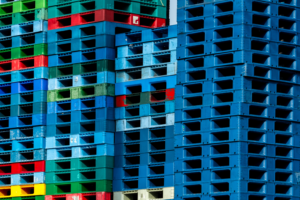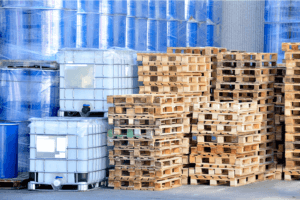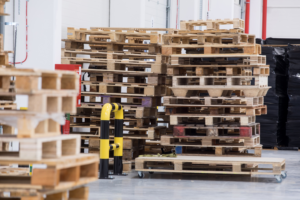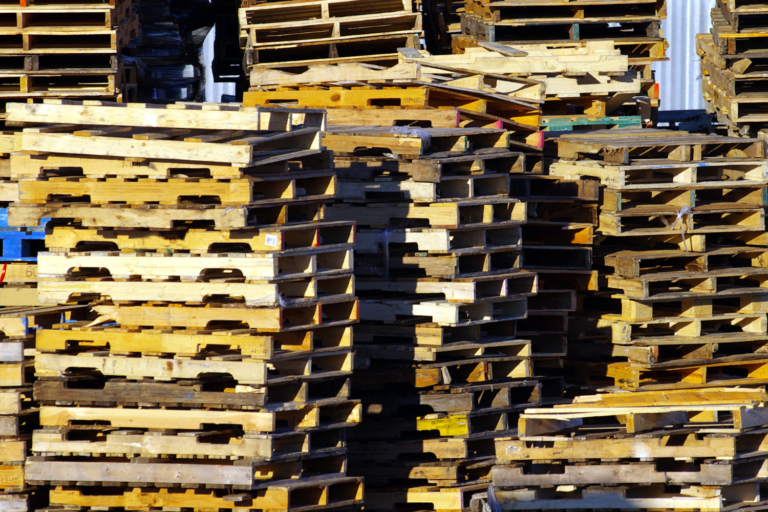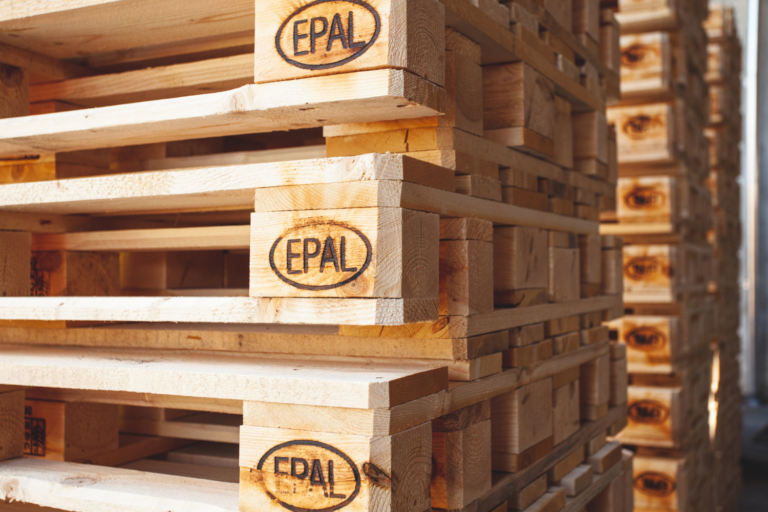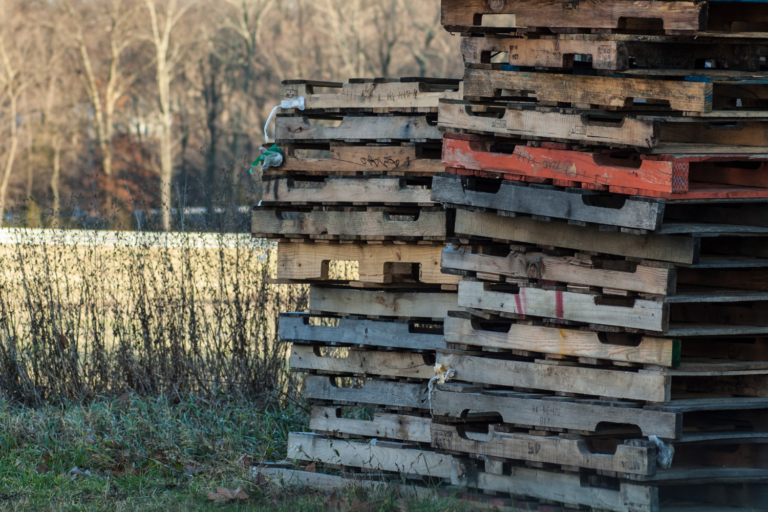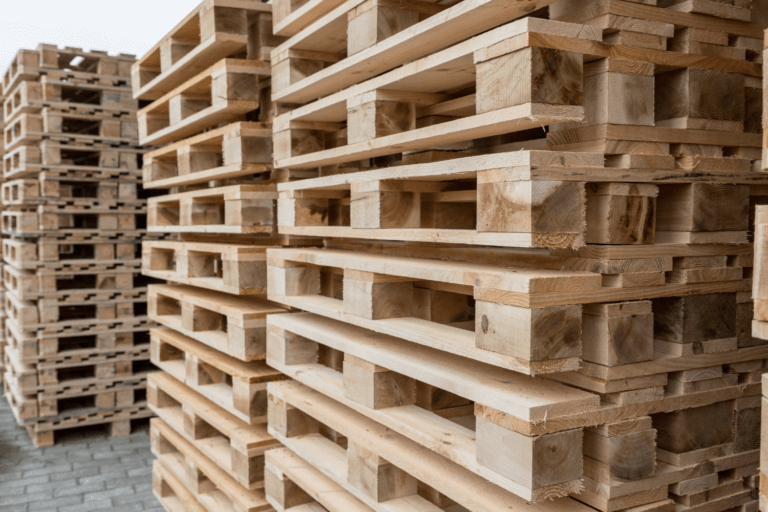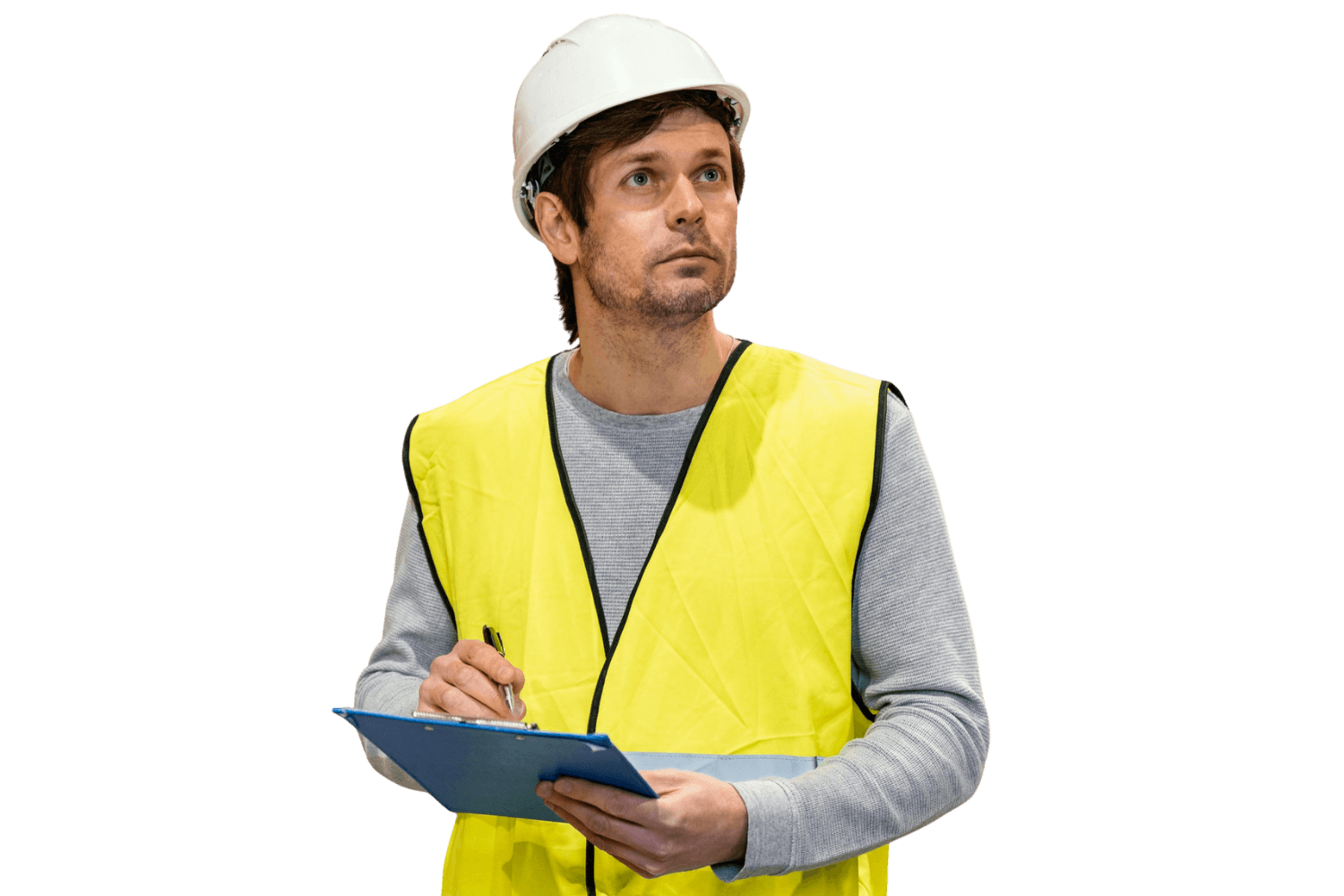Pallets are flat, typically rectangular platforms used to prevent goods from being damaged while being lifted by forklifts, pallet jacks, or front loaders.
They are indispensable in the logistics and supply chain sectors because they facilitate the movement, storage, and handling of materials and products across various industries.
Companies will lose so much if they don’t ensure that their goods are in great condition once they reach the recipient.
Consumers will demand refunds, and then they will lose sales. You don’t want to lose sales or deal with angry customers.
So, let us educate you about pallets.
5 Most Common Uses of Pallets
Firstly, what are the most common uses of pallets?
You can see many pallets in warehouses, especially in the main branches of various store outlets. Warehouses are huge, so they need to move stuff around without damaging them.
But because they are recyclable, some of them are in the garages of your neighbors, perhaps those neighbors who love DIY projects. Some might be using them as fences!
Below is a list of the most common uses of pallets.
1. Shipping and Transportation
Pallets provide a sturdy base to stack goods so that it easier to move large quantities with forklifts and pallet jacks.
You can load and unload trucks, trains, or ships quickly and efficiently. They keep everything organized and stable to ensure that products get from one place to another without getting damaged.
2. Warehousing and Storage
In warehouses, pallets are great for keeping things organized and making the best use of space. They allow you to stack goods vertically, so you can store more items in a smaller area.
This vertical stacking makes it easy to find and retrieve products. That saves time and reduces the hassle of managing inventory.
Using pallets helps protect goods from moisture and dirt on the warehouse floor, too.

3. Retail and Distribution
For retail and distribution, pallets simplify the process of moving products from distribution centers to stores. They make it easy to handle large quantities of items at once, which speeds up the restocking process.
Sometimes, stores even use pallets for in-store displays to make it easier to put products on shelves or floors for customers to see and buy.
4. Manufacturing and Production
Pallets are useful for moving raw materials, components, and finished products around the factory floor in manufacturing and production settings.
They help keep the production line running smoothly by making it easy to transport items between different stages of the manufacturing process.
5. DIY Projects
For the DIY enthusiast, pallets are a fantastic resource for creative projects. People repurpose them into all sorts of things, like furniture, garden planters, and even home decor.
They are sturdy and usually free or cheap, so pallets are also a popular choice for making custom tables, chairs, shelves, and more.
Do Pallets Have Environmental Impacts?
The supply chain won’t run smoothly without pallets, but they have environmental impacts, both positive and negative, that need to be managed. Obviously, you should worry about the negatives.
The good thing, though, is that the negative environmental impacts of pallets can be mitigated through sustainable sourcing, reuse, repair, recycling, and the adoption of innovative materials.
Still, it is good to be aware of how pallets affect the environment.
1. Wooden Pallets Involve Logging
Wooden pallets are made from wood, which means trees have to be cut down to produce them.
This logging process can lead to deforestation if it’s not done sustainably, meaning it can harm forests and the wildlife that lives there.
Deforestation reduces biodiversity and disrupts ecosystems, plus it contributes to climate change because fewer trees are left to absorb carbon dioxide from the atmosphere.
2. Production of Plastic Pallets Generates Significant Greenhouse Gas Emissions
Making plastic pallets involves using petroleum-based materials, and the entire production process is quite energy-intensive.
This means a lot of greenhouse gases, like carbon dioxide, are released into the atmosphere during manufacturing.
These emissions contribute to global warming and climate change. So, this makes plastic pallet production a significant environmental concern.
3. Pallets That Are Not Reused or Recycled Often End Up in Landfills
When pallets aren’t reused or recycled, they often get thrown away and end up in landfills.
Wooden pallets will eventually break down. But as they decompose, they can release methane, a potent greenhouse gas.
Plastic pallets, on the other hand, don’t break down easily and can linger in the environment for hundreds of years. They contribute to long-term pollution problems.

4. Moving Pallets Between Locations Involves Fuel Consumption and Associated Emissions
Transporting pallets from one place to another requires fuel, whether it’s by truck, train, or ship. This fuel consumption leads to the emission of greenhouse gases and other pollutants.
The more pallets that need to be moved over long distances, the greater the environmental impact from these emissions.
What Is the Standard Size of Pallets?
In the United States, the most common pallet size is 48″ x 40″.
This size is pretty much the standard for most industries. It’s used everywhere from warehouses and shipping docks to retail stores.
The 48″ x 40″ size is popular because it fits well in most trucks and containers. It is super convenient for shipping and storage.
Plus, it’s sturdy enough to handle a wide variety of goods, whether you’re moving boxes of cereal or stacks of paper.
So, if you see a pallet in the United States, chances are it’s 48″ x 40″.
10 Factors That Affect the Cost of Pallets
On average, a new wooden pallet typically costs between $11 and $13. If you go for used wooden pallets, you can usually find them for about $4 to $6 each.
Plastic pallets are more expensive, usually ranging from $10 to $50 or more, depending on their durability and design. Metal pallets, which are super sturdy and long-lasting, can cost anywhere from $50 to $150.
The cost of pallets can vary quite a bit depending on many factors, so take those prices with a grain of salt.
The factors that affect the cost of pallets are enumerated below.
1. Material
The material used to make pallets plays a big role in their cost. Each material has its pros and cons, but the type you choose will significantly impact how much you pay.
Wooden pallets are generally cheaper, especially if they’re made from softwood. Wood is a widely available natural resource, so there’s no shortage.
Plastic pallets cost more because they’re made from petroleum-based materials and are more durable. The manufacturing process is also more complex and often involves specialized equipment.
Metal pallets are the priciest due to the cost of the metal, their long-lasting nature, and their production process. They are often fabricated using welding, machining, or stamping techniques.
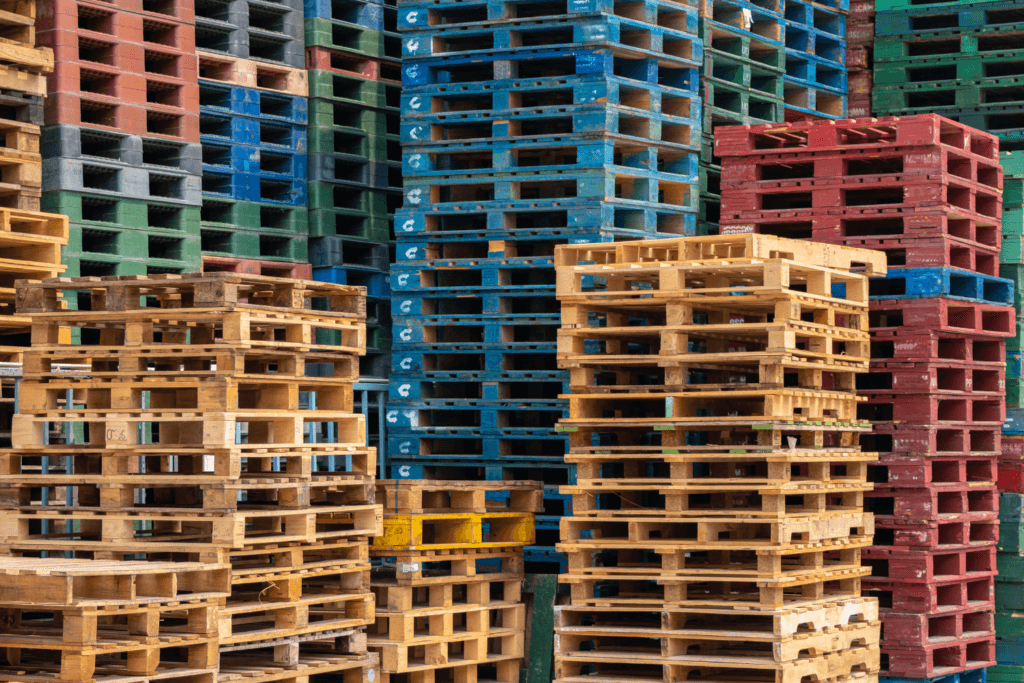
2. Size and Design
Standard-sized pallets are more cost-effective because they’re produced in large quantities.
But custom sizes or designs with special features, like additional reinforcements or specific shapes, can drive up the cost. The more complex the design, the higher the price tag will be.
3. Manufacturing Process
Pallets that are mass-produced using automated processes are generally cheaper than those that require more manual labor or intricate assembly.
Advanced manufacturing techniques, like injection molding for plastic pallets, can add to the cost but often result in a more durable product.
4. Treatment and Compliance
Pallets often need to be treated to meet certain regulations, especially for international shipping.
Wooden pallets, for example, might need heat treatment or fumigation to prevent pest infestation, which adds to their cost.
Compliance with standards like ISPM15 can increase prices but is necessary for ensuring safety and regulatory adherence.
5. Market Demand and Supply
The basic economic principle of supply and demand heavily influences pallet prices.
When the demand for pallets is high and supply is low, prices go up. Conversely, if there’s an oversupply of pallets, prices tend to drop.
Seasonal fluctuations and market trends can also impact this balance.
6. Quantity
Buying pallets in bulk can lead to significant cost savings. Many suppliers offer discounts for larger orders. It reduces the price per pallet.
If you only need a few pallets, you’ll likely pay more per unit than you would for a large, bulk purchase.
7. Durability and Lifecycle
High-quality, durable pallets that can withstand heavy use and last longer will generally cost more upfront but can save money over time due to fewer replacements.
8. Reusability and Recycling
Pallets designed for multiple uses or those made from recyclable materials can affect overall costs.
Reusable pallets, like those made from plastic or metal, may have a higher initial cost but save money through repeated use.
Additionally, pallets that can be easily recycled at the end of their lifecycle may offer cost benefits and reduce environmental impact.
9. Transportation and Logistics
The distance and logistics involved in getting the pallets to their destination can influence the final cost, with longer distances typically resulting in higher shipping fees.

10. Customization and Branding
Personalized features often require special production processes and materials, so they are more expensive than standard pallets.
However, customization can add value by promoting brand identity and meeting specific functional needs, so you may want to consider this.
5 Types of Pallets and Their Uses
You know that pallets will up your game, but which type of pallet?
Understanding these different types of pallets and their uses will help you select the right pallets based on your operational needs, industry standards, and sustainability goals.
1. GMA Pallets
GMA (Grocery Manufacturers Association) pallets are the standard in many industries, including retail and grocery. They are known for being durable and affordable.
They measure about 48” x 40” and are typically made from wood.
Their standardized size ensures compatibility with most warehouse racks and handling equipment. They fit well in trucks and containers.
2. Block Pallets
Block pallets differ from GMA pallets in their construction, featuring blocks of wood or plastic at each corner instead of continuous stringers.
This design enhances stability and load-bearing capacity, so these pallets are suitable for heavy loads and rugged environments like manufacturing and industrial settings.
The blocks elevate the pallet from the ground to prevent damage from forklifts and ensure better airflow for perishable goods.
3. Plastic Pallets
While initially more expensive than wooden pallets, plastic pallets’ durability and recyclability offer long-term cost savings and environmental benefits.
They are made from materials like polyethylene or polypropylene, so they resist moisture, chemicals, and pests. They are ideal for industries with stringent hygiene standards.
They are also lightweight yet sturdy, often designed for repeated use and easy cleaning.
They’re suitable for international shipping, as they comply with ISPM15 regulations without requiring heat treatment or fumigation.
4. Recycled Pallets
Recycled pallets are environmentally friendly alternatives made from reclaimed materials, such as recycled wood or plastic.
These pallets reduce waste and minimize the demand for virgin materials.
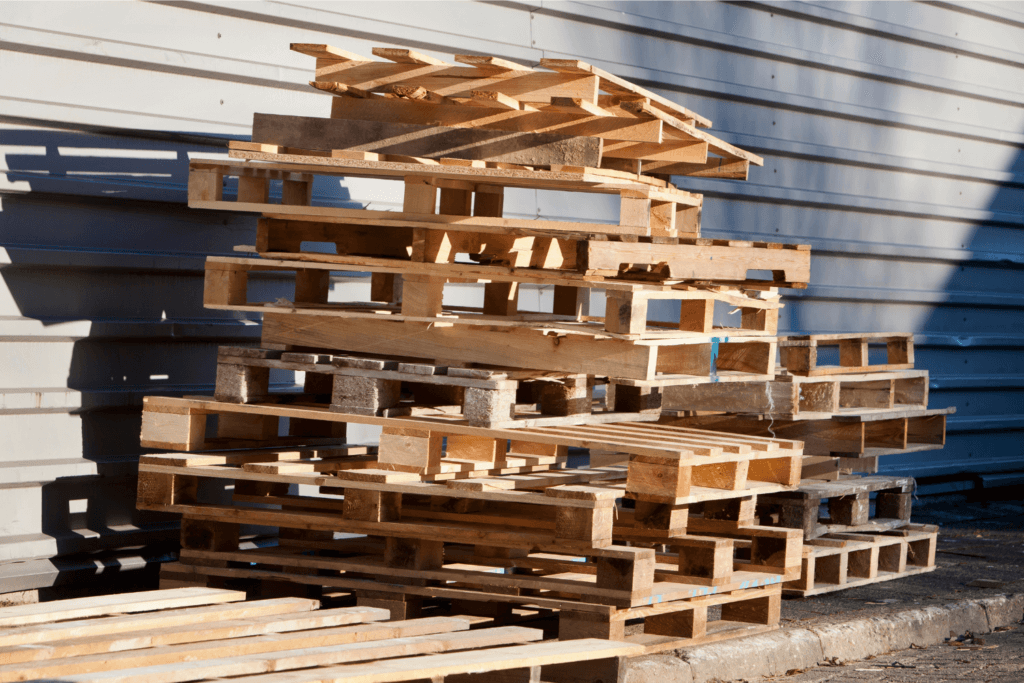
5. Custom Pallets
Custom pallets are tailored to specific requirements or unique applications.
They can be designed with specialized dimensions, load capacities, or features like RFID tracking, anti-slip surfaces, or ergonomic handles.
Industries with specialized needs such as aerospace, automotive, or pharmaceuticals usually use custom pallets, as standard pallets may not meet specific operational or safety requirements.
While they may incur higher upfront costs due to design and production complexities, they provide optimized solutions that improve workflow efficiency and product safety during handling and transport.
7 Must-Have Pallet Handling Equipment
Pallet handling equipment is a must because it makes moving and managing pallets safer, faster, and more efficient in various industries.
These tools are designed to handle the heavy loads and awkward shapes of palletized goods that would otherwise be difficult or unsafe for manual handling.
You can use the pallet handling equipment below to ensure your pallets go from one place to another safely.
1. Forklifts
Forklifts are heavy-duty machines designed to lift, move, and stack pallets of goods.
They are helpful for loading and unloading trucks, organizing inventory in warehouses, and quickly transporting pallets to where they need to go.
They come in various sizes and capacities, from small electric models for indoor use to large diesel-powered ones for outdoor yards.
Their ability to handle heavy loads and navigate tight spaces makes them indispensable in logistics and supply chain management.
2. Pallet Jacks and Trucks
Pallet jacks and trucks are manual or electric-powered tools with forks that slide under pallets to lift and move them short distances.
They are perfect for maneuvering pallets around tight corners in warehouses or loading docks where forklifts might be too big or unnecessary.
They’re simpler to operate and maintain than forklifts but still essential for tasks like replenishing shelves in retail stores or distributing goods within a factory.
3. Pallet Racks
Pallet racks are sturdy metal structures designed to hold multiple pallets vertically to maximize warehouse space and organization.
They come in various configurations, like selective racks that allow easy access to each pallet, or drive-in racks for high-density storage where space is limited.
They play a critical role in logistics by efficiently storing goods while keeping them accessible for quick retrieval and distribution.
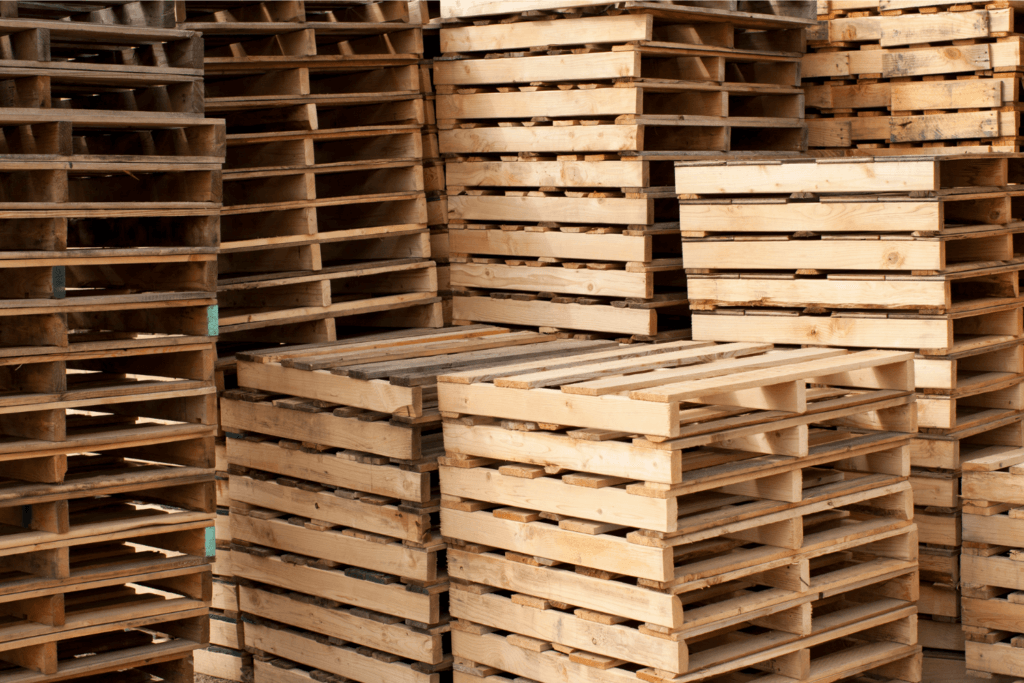
4. Strapping Machines
Strapping machines secure loads on pallets with plastic or metal straps to ensure they stay intact during transportation and handling.
They automate the process of applying straps around palletized goods, which is faster and more consistent than manual strapping.
This not only enhances load stability but also minimizes the risk of product damage or loss during transit.
5. Dock Levelers
Dock levelers create a smooth transition between the loading dock and the truck bed to allow forklifts or pallet jacks to move pallets in and out with ease.
They adjust to different truck heights and can support heavy loads to ensure safe and efficient loading and unloading operations.
They prevent accidents like trips and falls while facilitating faster turnaround times for trucks, which is important for maintaining supply chain efficiency and meeting delivery schedules.
6. Pallet Inverters
Pallet inverters rotate palletized loads 180 degrees, which allows products to be transferred from one pallet to another without manual handling.
They are used in industries where goods need to be repacked, inspected, or transferred between pallets quickly and efficiently.
They save time and labor, reduce the risk of product damage, and ensure uniformity in palletized loads.
7. Pallet Scales
Pallet scales weigh palletized loads accurately to help businesses track inventory, calculate shipping costs, and ensure compliance with weight regulations.
They come in various types, from floor scales integrated with pallet jacks to large platform scales for weighing multiple pallets simultaneously.
They provide real-time weight data, which is crucial for logistics and supply chain management.
How to Find the Best Pallet Supplier
A reliable pallet supplier provides consistent quality and timely delivery of pallets, which are essential for safely storing, transporting, and distributing goods.
This is why you need to know how to find the best pallet supplier. Don’t sign a contract with just anyone. Ask these questions when assessing prospects:
- What types of pallets do you offer?
- Do your pallets meet industry standards and regulations?
- Can you provide pallets in custom sizes or designs tailored to our specific requirements?
- What is your production capacity, and how quickly can you fulfill large orders?
- What are your pricing options?
- How do you manage quality control and mitigate risks related to defective pallets or non-compliance with standards?
- What level of customer support do you offer, and how responsive are you to inquiries or issues?
Our company, Chesapeake Pallets, is a trusted pallet distributor in the United States.
You can learn more about how you can vet pallet suppliers by sending us an email at info@chesapeakepallets.com or calling us at 470-995-5662.
You can also find our quote form below if you consider working with us!
Conclusion
Imagine a warehouse without pallets: stacks of boxes everywhere, which people lift manually, relying solely on their mighty muscles. Organizing and transporting goods would be a nightmare!
Pallets provide a sturdy foundation for goods to sit on. They make things easier to stack, store, and move around using forklifts or pallet jacks.
This simplicity in handling not only speeds up loading and unloading trucks but also reduces the risk of damage to products.
Chesapeake Pallets has been helping companies across the United States level up their logistics, one pallet at a time. Request a quote below!


